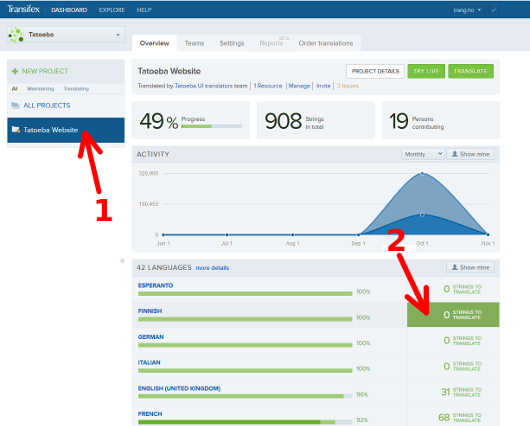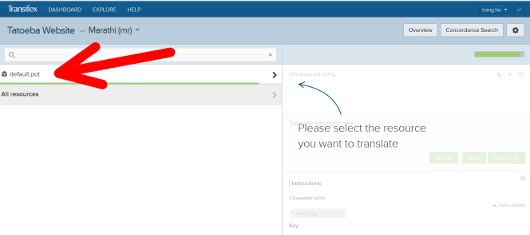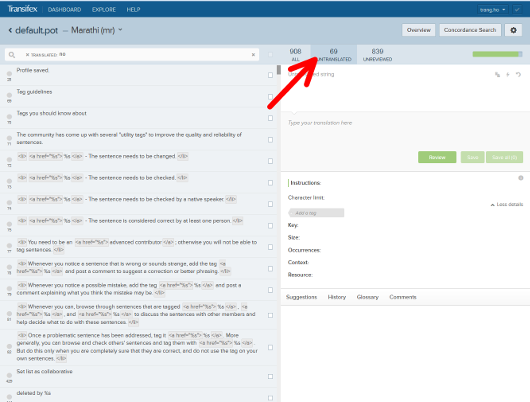Notice
This page show a previous version of the articleInterface Translation
This article explains how you can help us translate the website interface into other languages.
Accessing the translation platform
We use a platform called Transifex to manage the translations of the website. Here's what you have to do in order to join the translators team:
- Go to this page https://www.transifex.com/projects/p/tatoeba_website/.
- If you do not have an account on Transifex: click on "Help translate Tatoeba website" and create your account.
- If you do have an account: log in, choose the language(s) in which you would like to translate and apply to be a translator.
- You have to wait for your application to be accepted.
Once you have been accepted as a translator, here's how you can access the list of strings to translate.
From your dashboard:

Then select the "default.pot" resource:

Select "Untranslated" strings:

If you need to learn more about Transifex, you can read their documentation: http://docs.transifex.com/.
Translating strings
A "string" is the basic unit of translatable content. It may contain part of a sentence, one sentence, or more sentences.
Placeholders
Some strings include words between brackets like {0} or {user} or even {}. These words act as placeholders and are replaced by actual words when displayed on the website. For instance, in the string "{user}'s sentences", the {user} part is replaced by the name of a user, which produces something like "trang's sentences". Therefore, when translating such sentences, you must keep every word between brackets as-is inside your translation. We use to have %s as placeholder, but not anymore.
Useful information in the details
Each translation has a “More details” link that expands detailed information. A few lines contains useful information.

The “Occurrences” line shows you URLs that brings you to the source code. This is primarily used by developers, but you can try to get a grasp of what it’s about. If the link contains “/views/”, it’s possible to get to the page where the string is used by building a URL like as described on the picture.
The “Context” line (underlined in red on the picture) is used to distinguish two or more translations that have the same source text. It happens that the same English string can be translated in multiple ways depending on the context, especially if it’s short. Take for instance the word “test”. Is it the verb “to test” as an action on a button, or an exam?
Checking how your translation renders online
If you know the page your translated string is supposed to appear, you can check how it renders by going to the development website. Translations are automatically pulled from Transifex and installed there every ten minutes.